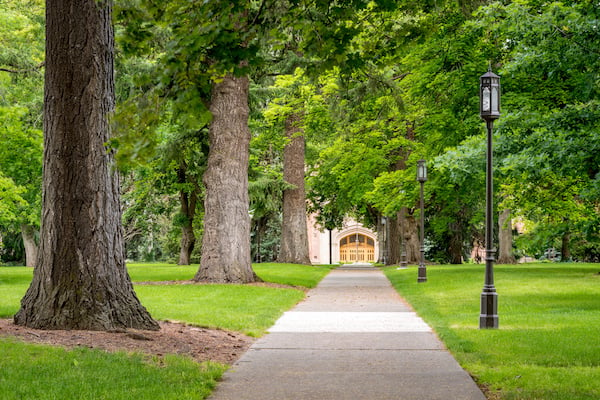Published on
[Reflection] Focusing on Summer Melt in Higher Ed

As student populations continue to shrink, it’s critical for institutions to foster and nurture the students they have left. Students need to be kept in the loop even before they step through the doors. In this interview, Ian Anderson discusses why higher ed needs to focus on summer melt, ways to maximize yield and how Utah State University focuses on student retention.
The EvoLLLution (Evo) Why is summer melt and year yield more broadly a major priority for modern higher ed institutions?
Ian Anderson (IA): Over the last several years and into the future, we’re expecting fewer students. With that increasing yield percentage—from admissions to enrollments—it’s the best way for institutions to maintain their numbers. There won’t be more students to actively recruit.
But there are a few ways to help with this: We can seek out those who traditionally haven’t applied to institutions but also have more yield efforts in place, being intentional with these yield efforts to help maintain current enrollment levels and find ways to increase them.
Evo: What are some common challenges land-grant universities face when it comes to maximizing yield?
IA: One of the major challenges we’re facing is the way our institution is set up to serve the population within the state of Utah. We have 30 campuses, and it’s a large state. So, we have a main campus, three residential campuses and other campuses that serve smaller, more focused learner demographics. We have many opportunities to serve all types of learners, but we are essentially competing with ourselves.
Serving students is the most important thing to us, and we want what’s best for them. But we also want the institution to be the best fit for the student, so we face challenges internally when it comes to which campus students are fit for.
We’ve been trying to figure out how to be more intentional with our communication and ultimately looking at what’s best for the student. We want their experience to be the best it can be. Going to the wrong campus during the recruitment process can negatively impact their experience, and they may choose a different school altogether.
Evo: How can institutions create more cross-departmental collaboration instead of being competitive with each other?
IA: Depending on the institution, there can be several ways to collaborate. We’ve tried to centralize our recruitment and enrollment management. We’ve shifted the way applications are processed and brought it all together in our central admissions office. Of course, you’re going to have to work through some things, but it’s been a good shift overall.
We also created a systemwide recruitment collaborative where we meet frequently with groups. Within those groups are a deck director of statewide recruitment, recruiters, admission specialists, etc. who discuss what’s going on system wide. This way we can learn from each other and collaborate where we can. It also prevents any overlap in case different campuses want to visit certain schools.
Evo: What are some other things Utah State has done to create a more collaborative environment?
IA: The environment is always changing, and we’re looking for a new president, which will involve some new leadership and admin. Fortunately, the current admin has been very supportive of our efforts. We also work with third-party companies to bring in that outside perspective and inform some of the strategic management and prioritize goals. All our efforts couldn’t happen without buy-in from all stakeholders.
Evo: What impact are you seeing from these initiatives?
IA: When it comes to the recruitment office and the orientation office, we see it as a baton hand-off. And that’s yield in my mind. Starting in January, we have a yield meeting on a bimonthly basis, where we meet with leadership from housing, recruitment admissions, orientation and other departments as needed. We’re also looking how to incorporate colleges to ensure they’re actively involved.
We’re seeing this collaboration impact housing. Before, we would struggle with students failing to confirm their enrollment until the last minute, at which point they would also request housing. There would be a lot of scrambling to organize everything near the beginning of term. But we’re now able to see what supply and demand are like for housing months before students need to solidify their housing situation.
Now, once a student confirms their enrollment we guide them to the next step—whether that’s orientation or housing registration. Students then pay a deposit for housing to save a seat, and housing is still able to pay the bonds. It makes everything much more efficient and organized.
Evo: How are you directly communicating with your students?
IA: The other initiative that’s been impactful for our yield with orientation is using Signal Vine to text students. Our admissions recruitment office has 100 student ambassadors. The team will do text blitzes to let students know when specific deadlines are coming up. They inform students about enrollment confirmation, housing, course registration, etc.
We’ve texted over 10,000 students since February. There’s no way our full-time recruitment staff could’ve handled that workload, so that’s where the ambassadors and the ability to blast texts really come in handy. And our response rates have generally been increasing each year. Students aren’t also left behind. By communicating directly with them, we’re able to confirm their enrollment and essentially clean up our database at the same time. Before, students would just disappear because they never confirmed enrollment and may have chosen to go elsewhere. But now, we’re able to stay on top of enrollments and focus on our students who are confirmed and ready to start at USU.
This interview was edited for length and clarity.
Author Perspective: Administrator



